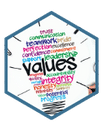Workplace Violence Prevention Training For Supervisors & Managers
The upheaval caused by 9-11, uncertainty in the marketplace, wars that don’t seem to end, terrorism, business malfeasances, constant uncertainty, constant change, greater emphasis on speed and the pressure to do more work with fewer people, has greatly increased your employees’ level of stress, tension, and frustration.
The fact that some employees lack the emotional skills or temperament to manage this pressure has resulted in a sharp increase in workplace violence – acts, threats, bullying, anger, sabotage, and absenteeism. This increased potential for confrontation has placed new demands on supervisors, many of whom are unprepared to handle such demands.
TrainSMART’s preventing violence in workplace training prepares you to identify symptoms and causes of workplace violence and to take corrective actions. You learn the warning signs of potential violence and defuse anger and conflict.
Why You Need Preventing Violence In The Workplace Training
- Human resources, supervisors, or other employees receiving complaints about threats from co-workers
- Increase in workplace violence
- Employees are unsure how to handle violent situations
TrainSMART’s Solution
Participants Will Learn To…
- Establish processes and procedures in advance
- Identify the early warning signs related to violence
- Empathize with those under stress
- Communicate effectively to all involved
- Recognize when the situation is beyond you and seek help
Course Outline
- The physiology and psychology of anger and violence
- Developing a more expressive communicating style — handling criticism and aggressive individuals
- Constructive and effective conflict resolution methods
- Developing self-esteem in one’s self and in others, to reduce conflict
- Listening effectively – feedback
- How to handle difficult people
- Reading body language
- Understanding aggressive/assertive/submissive behavior
- Good and bad conflict
- Recognizing tense situations and reducing the potential for conflict
- Communicating with persuasion and win support
- Defusing anger
- Use of “Violence Response Teams”
- Legal and liability issues
- What you must and must not do when employees are in a “high risk” way
- The role of government in curbing workplace violence (OSHA)
- Leadership and organizational dynamics
- Managing conflict – as it relates to behavior
- Establishing clear channels for communicating threats
- Identifying potentially dangerous individuals, as well as difficult situations that spur violence
- What you must and must not do, as a manager, when employees are in a high-risk way
Target Audience
Appropriate for all employees and especially relevant for team leaders, supervisors, and managers
Human Resources Workshops

Insightful, Practical, Empowering
Ethics
This workshop provides managers with a proven framework to tackle real-world ethical dilemmas.

Insightful, Proactive, Empowering
Workplace Violence Prevention
This workshop equips managers to identify warning signs early and defuse anger and conflict before it escalates.

Strategic, results-driven, compliant
Behavioral Interviewing
This workshop provides a legally sound framework to develop targeted questions that accurately assess job candidates.

Essential, proactive, compliant
Workplace Harassment
This legally required workshop teaches employees at all levels how to recognize and address harassing behaviors before they escalate.

Strategic, engaging, smooth
On-Target Onboarding
This workshop provides managers a blueprint to welcome, acclimate, and retain new hires starting on day one.

Essential, Supportive, Healthy
Bullying In The Workplace
This workshop gives employees at all levels the tools to recognize bullying behaviors, protect themselves and others, and foster a respectful workplace.

Strategic, engaging, cost-saving
Goodbye Talent Turnover
This workshop provides managers with the tools to boost employee retention through positive feedback and proactive coaching.

Enlightening, Unifying, Empowering
Diversity, Equity, and Inclusion
This workshop fosters understanding, respect, and inclusion across all differences to tap the full potential of a diverse workforce.